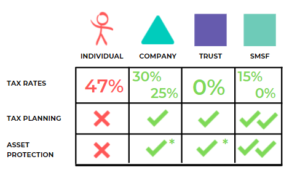Are Christmas Gifts FBT?
For tax purposes, a Christmas gift may also be considered as an entertainment.
There are two kinds of gifts:
Entertainment gifts
Items such as movie tickets, concert, airline, theatre tickets may be subject to FBT and not deductible for tax purposes.
Gifts that are more than $300 are subject to FBT. It is likely tax deductible if you are paying an FBT and you can claim the GST. Keep in mind that you will be paying the equivalent of 47% tax on it. If gifts are less than $300, then it’s not subject to FBT and we can’t claim the GST either.
Examples of entertainment:
- Theme park tickets
- Sport/golf
- Leisure activities
- Dinner/drinks
- Movie/concert tickets
- Cruise
- Gift cards for the above things
Non-entertainment gifts
If your business sends chocolate, gift vouchers, pens, or Christmas hampers, this stuff falls outside of the entertainment criteria and you won’t have FBT on it, and it’s most likely tax deductible.
Gifts for employees or clients under $300 are tax deductible without FBT.
Examples of non-entertainment:
- Gift voucher (groceries, health & wellness, books etc)
- Wine or champagne
- Flowers
- Hamper
- Skincare/beauty products
- Perfume
- Computer/TV equipment
Watch the webinar replay, ‘Christmas Parties & Tax – How wine is tax deductible’ at https://www.facebook.com/InspireCA/videos/1544736652557674
What To Watch Out For With Family Funds
In SMSF, it used to have up to 4 members but now it’s gone up to 6 members in the Superfund.
6 people’s balances are better than 1. If you have an average of 100 grand per person and you have 2 people in it, then you’ll have a 200 grand in your fund. And since you got 6, then that would be 600 grand in total. So it’s a lot more money to play with so to speak.
You need to be careful of a few things here:
- Death – What if someone dies and there are 5 members in the fund? How are they going to manage that dead person’s assets and estate when it comes to their superannuation?
- Disability – Are they going to be working together constructively to manage that self-managed super?
- Divorce – If you have two people in the fund like a husband and wife, and they get divorced, they have to act in the best interest of the fund and each other. What if you invited your son or your daughter into your fund and they got divorced but whoever they were with was also in the fund. You need to be very careful when dealing with that situation. You can have up to 6 members but there’s a reason why there’s an average of 2members per fund.
If there are more people, then it equals to more decision-makers or people with their own opinions, and that is another layer of complexity.
You can reduce this risk by a leading member fund and we’ve seen this thing that we can set up called a ‘Leading member fund’ where there is an overall decision maker if people can’t agree. It’s kind of a cool thing to lock in if you want to take better control and you’ve got a few more members than just yourself, and your spouse. And you can convert an existing SMSF to a leading member fund as well so if you’ve already got one, we can change that and set that up to a leading member.
Need to speak to an accountant? Book a ZERO cost 20 minute strategy call with an Inspire Accountant at https://inspire.accountants/chat



